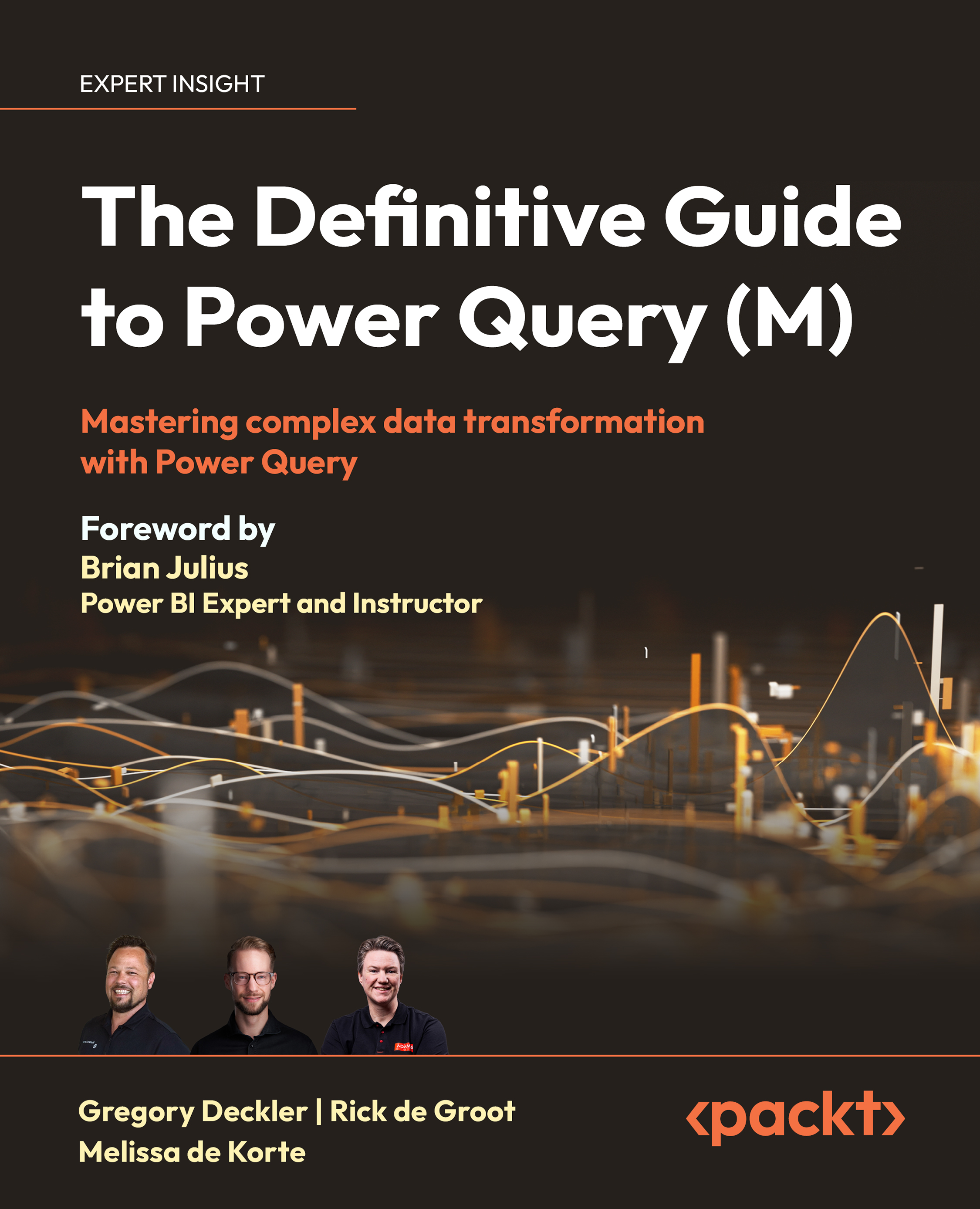Who should learn M?
M is a powerful tool for data professionals and individuals who work with data on a regular basis. The versatility and capabilities of M make it a valuable language to learn for various roles, including the following:
- Data analysts: Data analysts who deal with data extraction, transformation, and preparation tasks can greatly benefit from learning M. It provides a comprehensive set of functions and operators that enable data analysts to efficiently shape and manipulate data from diverse sources. By mastering M, data analysts can automate repetitive tasks, handle complex data transformations, and ensure data quality, leading to more accurate and reliable data analysis.
- Business intelligence professionals: Professionals in the business intelligence (BI) space can greatly enhance their skills by learning M. It is a core component of Power BI. By understanding M, BI professionals gain the ability to connect to various data sources, perform complex data transformations, and create reusable data preparation workflows, enabling them to provide actionable insights and drive informed decision-making.
- Data engineers: Data engineers involved in the design and implementation of data pipelines and data integration processes can really benefit from learning M. It allows data engineers to efficiently extract, transform, and load (ETL) data from different sources into data warehouses or data lakes, specifically within Power BI and Microsoft Fabric. M also provides the flexibility and power to handle complex data formats, define custom transformations, and create efficient data processing workflows. By mastering M, data engineers can streamline data integration processes and ensure data consistency and quality.
- Data scientists: Data scientists who perform exploratory data analysis, model development, and advanced analytics can leverage the capabilities of M to efficiently prepare their data. M provides a robust set of functions for cleaning, shaping, and aggregating data, allowing data scientists to focus on the analytical aspects of their work. By incorporating M into their data preparation workflows, data scientists can streamline the pipeline of turning raw data into insights, spending less time on data cleansing and preparation and more time on data modeling and analysis.
- Power users: Power users in Excel and Microsoft’s Power Platform who work extensively with data and perform complex data manipulations can benefit from learning M. It is integrated into Excel through Power Query, empowering users to perform advanced data transformations within the familiar Excel interface. In addition, M is integrated into the Microsoft Power Platform via data integration, allowing data to be transformed and mapped between systems. By mastering M, Power users can expand their data manipulation capabilities, automate repetitive tasks, and enhance the accuracy and reliability of their analyses.
- Individuals in data-driven roles: Beyond the specific roles mentioned above, individuals in various data-driven roles, such as project managers, consultants, researchers, and domain experts, can benefit from learning M. Mastery of M provides the ability for individuals in these roles to independently handle data-related tasks, extract meaningful insights, and make informed decisions based on reliable data.
M is a valuable language for a wide range of data professionals and other individuals who work with data. Whether you are a data analyst, BI professional, data engineer, data scientist, power user, or someone in a data-driven role, learning M empowers you to efficiently ingest, transform, and prepare data for analysis.
Now that we understand what types of individuals would want to learn M, let’s next explore where those individuals can leverage their mastery of M.

































































